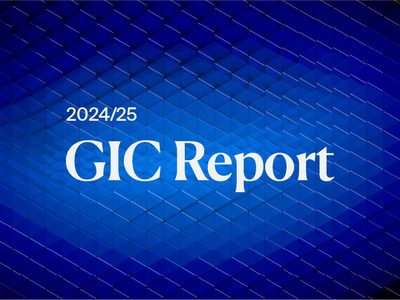This is an adapted transcript of a keynote presentation by GIC’s Chief Investment Officer for Public Equities, Bryan Yeo, delivered at the 3rd UBS Sovereign Investment Circle.
In this keynote speech, I will talk about features of today’s uncertain investment environment, as well as how we can seize opportunities and manage risks despite the inevitably heightened level of volatility. Some drivers to consider are the following:
- Growth: We are at a point where global policy makers must make hard choices between growth and inflation, and we expect this trade-off to be magnified over the coming years. How the Federal Reserve Bank and other central banks around the world manage this trade-off will impact the performance of bond and equity markets.
- Rising geopolitical risks: The various geopolitical hotspots will have significant implications for portfolio construction, and how we deploy capital going forward.
- Thematic trends: We anticipate major thematic trends to have a lasting impact on our investment decisions.
We foresee four broad thematic trends over the next five to ten years:
Climate change and decarbonisation
Efforts to decarbonise economies will be with us for the next several decades, as countries have committed themselves to climate goals. The transition towards renewable energy sources will require large-scale capital expenditures in excess of those taken thus far. In the interim, reliance on carbon-based energy sources will remain high, and in aggregate, traditional oil and gas companies have underinvested during the past decade to maintain their output capacities; this will likely keep a floor under energy prices in the foreseeable future.
Supply chain diversification
The next decade will likely be marked by restrictions on capital flows, the emergence of separate technology ecosystems, the decoupling of economic cycles, and the diversification and “re-shoring” of supply chains to increase resilience and reduce dependencies. The re-shuffling of supply chains will require increased capital expenditures, create winners and losers, and pressure margins of multinational corporations to lower, which in the past enjoyed low input costs from the outsourcing of production.
Sticky inflation
We expect inflation to remain higher-for-longer, and in fact, to print meaningfully above the historical range of 2 to 2.5% in the US, which – for the time being – markets are discounting to continue, as reflected in the relatively stable US five-year forward breakeven inflation rate. There is a distinct possibility, however, that actual inflation prints will surprise on the upside in light of the energy transition, supply chain diversification, and (partial) de-globalisation.
Quantum leaps in science and technology
We are looking at a sharp pick-up in advances in science and technology. Currently, we are experiencing an exponential increase in the filing of patents in the field of artificial intelligence and in other areas of advanced computing, such as quantum computing.
Research and development expenses by US large cap biotechnology stocks have surged in the past decade, and we are likely to see a plethora of technological breakthroughs and scientific advancements in these areas, which will result in investment opportunities.
In light of these trends, how can investors seize the opportunities and manage the risks?
Portfolio diversification
In a world where uncertainty continues to be on the rise, it is key for investors to raise the resilience of their portfolios. Portfolio diversification is something that we spend a lot of time on when thinking about portfolio construction within our respective asset classes and across our total portfolio.
When we think about diversification, we must exercise more creativity, as we enter an era of greater macro uncertainty. This might mean moving away from traditional approaches to diversification that focus on asset classes and regions; instead, we may need to incorporate countries and sectors into the diversification mix and broaden our investing styles to suit our client mandates.
At GIC, we constantly carry out scenario planning exercises in order to look at how our portfolios can be more resilient across a broad range of economic outcomes. We always consider how we can continue to generate good real returns over the long-term.
— Bryan Yeo, CIO, Public Equities, GIC
In particular, we are focusing a lot on inflation protection, since we expect the world to experience structurally higher inflation than in the past four decades. Ultimately, a high degree of granularity around inflation protection is needed, even within hard assets. Real estate, for example, has many affiliated subcategories, some of which will be effective in protecting against inflation, while others might not.
Absolute returns
We have devoted significant resources to building absolute return strategies in our public markets business. Historically, most public equities mandates of large-scale real money investors involved fund managers focusing on beating a given benchmark. But in recent years, we have started building absolute return strategies within our public equity markets business in light of our expectation that we will need to manage greater volatility and the prospects of weaker beta returns.
Stress testing our portfolios
To strengthen our portfolios, we conduct stress tests and scenario analyses. In particular, we look at whether we have a legacy portfolio exposure to assets that would do well only in a low inflation and low interest rate environment.
If you think about elevated inflation, the last data point we have is the 1970s, where we saw a 12-year period of three market cycles. Each market cycle lasted an average of four years, which is much shorter compared to cycles in the recent past. History will not repeat itself exactly, but there are some lessons that can be drawn from that period, such as shorter market cycles, which greater macroeconomic volatility had brought about.
Now, what exactly are the opportunities and risks that we are seeing?
Opportunities ahead
One of the opportunities we see is in the developed market consumer space on both ends of the income distribution. While the middle-income consumer is likely to continue to get squeezed, especially so in a recession, we have been positioned in the very high-end luxury segment and the low-end segment (discount stores, fast food) for the past several years, and we continue to hold conviction in this exposure. The luxury segment seems almost “inflation-proof” due to the strong pricing power of companies, and while the discount retail sector experiences structural growth, it is defensive in recessions due to the down-trading of consumers.
Digitalisation in emerging markets is another promising area, with many opportunities in both the public and private space. In the Middle East, for example, governments are working with IT services companies to digitalise the delivery of public services.
Advanced computing, biotech, fintech, and the green energy transition are also themes that will see significant amounts of capital deployment in the form of capex. There will be some new technologies with promising opportunities, while others will fail. Carbon capture and green hydrogen are areas that we have invested in to take advantage of the green energy transition and decarbonisation.
Risks ahead
In the past year we met the managements of many companies, and we frequently asked them about their pricing power. Of course, it is impossible for every company to have strong pricing power, and it is our job to determine the winners.
As we are seeing a significant pick-up in innovation in the bio and healthcare space, we expect to see a fair amount of disruption; companies that are unable to innovate will face the risk of disruption, whilst those who successfully innovate will do well.
Regulatory and policy risk is another area that we constantly focus on. Regulation and policy changes can have significant implications on the addressable market size of companies, supply chains, and value generation.
Lastly, we are also watching geopolitical risks.
Looking ahead
The environment today suggests that we are in a cyclical bear market with occasional counter-trend rallies. Looking further out, various factors will drive companies’ prospects, including the level of interest rates, the reshuffling of supply chains, and higher inflation.
We need to bear in mind the impact of the creation of cheap capital during the past decade. We were in world where capital was very cheap, with zero interest rates and money printing by central banks, which resulted in a significant amount of capital misallocation. But in a higher interest rate environment, unprofitable and over-levered segments will suffer.
— Bryan Yeo, CIO, Public Equities, GIC
Such sectors will unravel over the coming years, and it will be key for investors to determine the resulting opportunities and risks.







